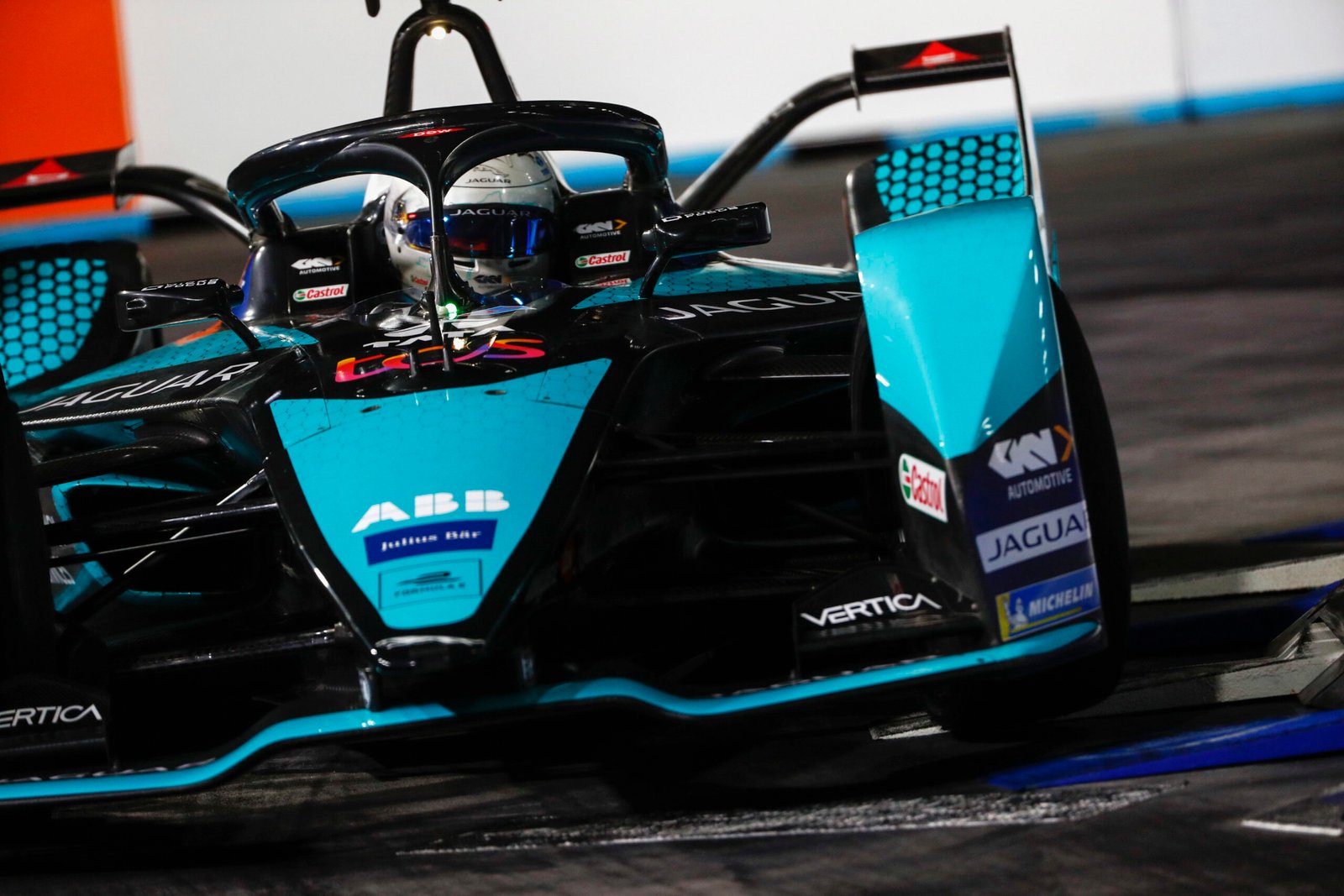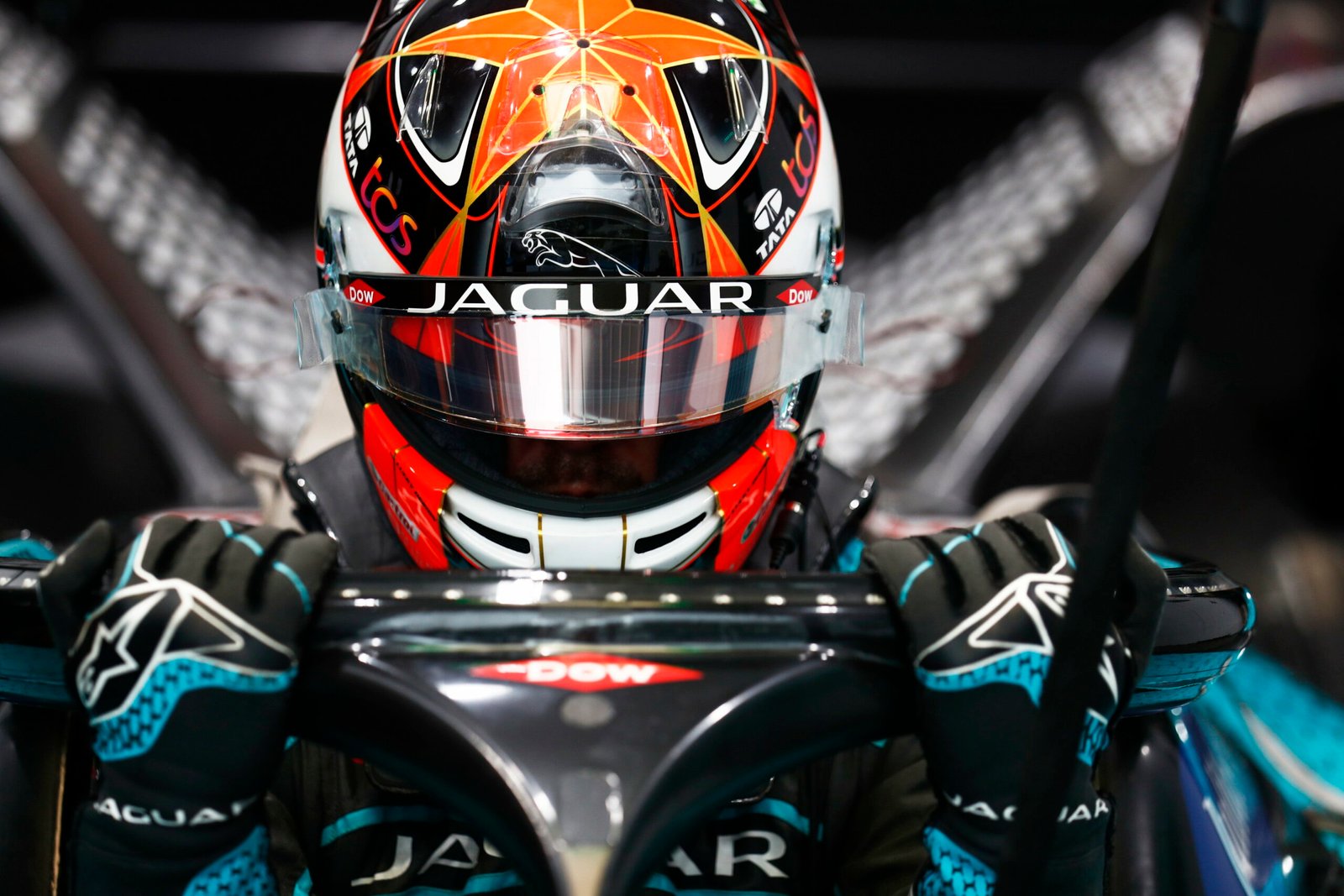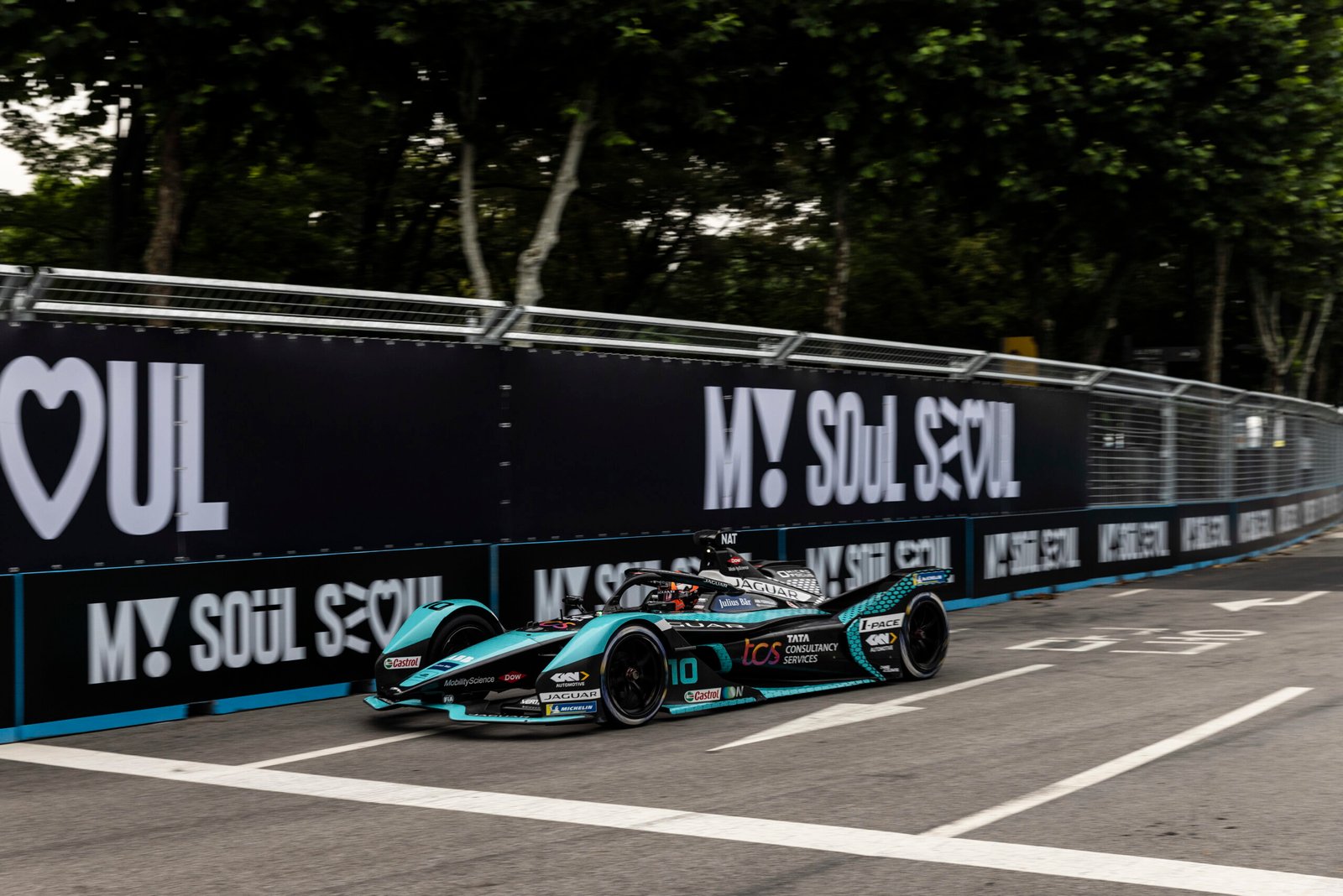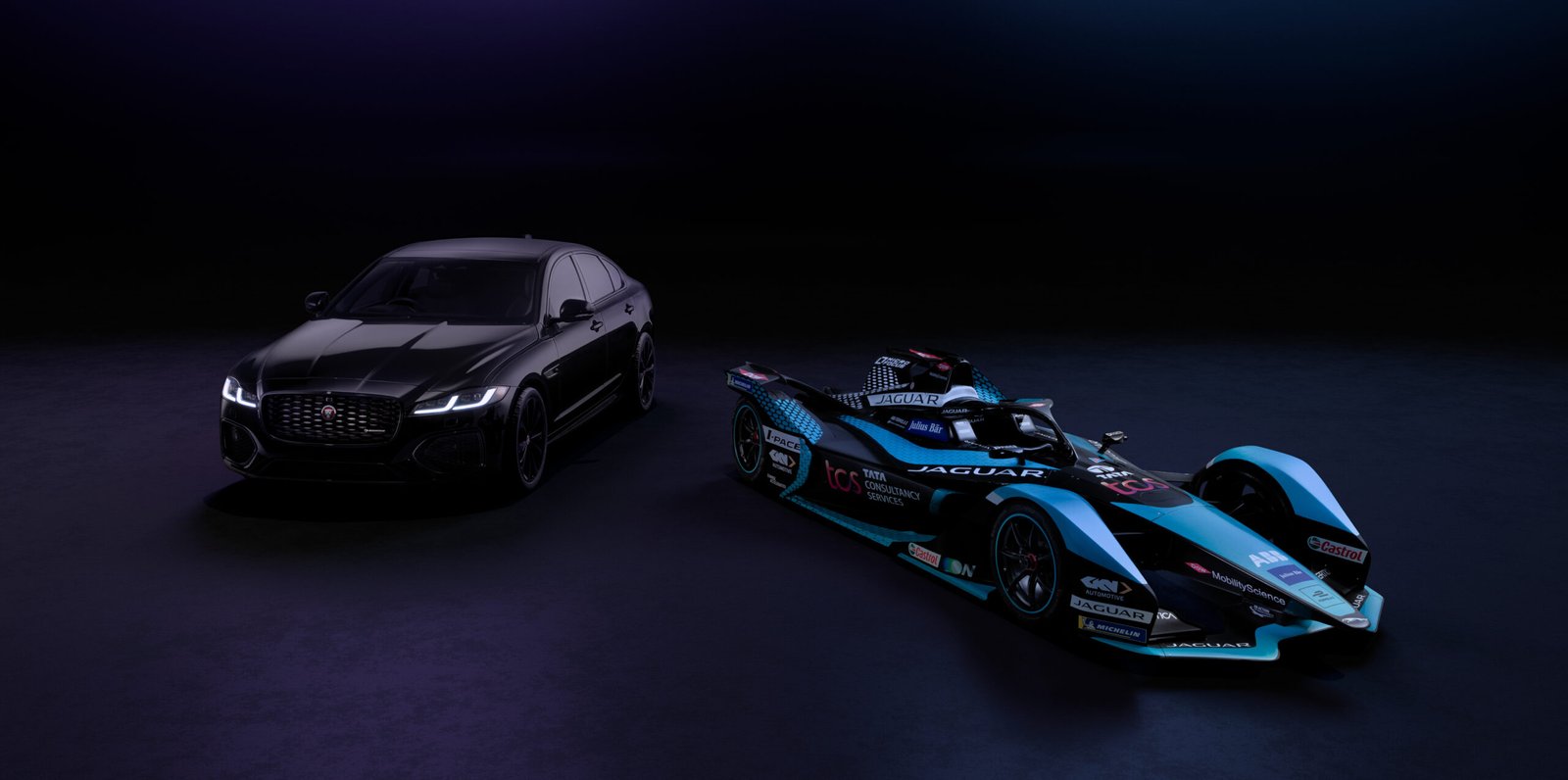- Smart Improvements: Predictive Energy Optimization (PEO) – Derived from the winning Jaguar TCS Racing Team – Improves energy efficiency in real driving conditions by 10%*
- Ideal balance: PEO optimizes range and efficiency in Jaguar F-PACE P400E and E-PACE P300E models, determining how to make the most of the power of PHEV electric and gasoline engines on the road
- Always thinking ahead: PEO also reserves at least 6km of pure electric range for your last stop on your journey to ensure a noise-free, emission-free arrival
- Perfect timing: Eco Coach in Jaguar XE, XF, E-PACE and F-PACE MHEV reads the road ahead and prompts drivers to move off as they approach bends, intersections and roundabouts to help them recover energy for maximum use
- Race proven: Eco Coach technology replicates the lift and coast cycle used by Jaguar TCS Racing drivers Mitch Evans and Sam Bird to optimize energy strategy during E-Prix

Monday 25th July 2022, Gaydon, UK – To get the best out of your Jaguar I-TYPE 5 Formula E car, you need to know exactly when energy is being used during the race, and when recuperation is being used via regenerative braking To best use. Efficiency to win the game.
Jaguar TCS Racing drivers Mitch Evans and Sam Bird expertly assess lap after lap that the best braking point is the corner, but just as important is the best place to release gas so they can maximize regeneration, not friction Braking wastes energy. Learning from these strategies can bring immediate, real customer benefits to customers by improving the efficiency and reducing emissions of Jaguar Plug-In Hybrid Electric Vehicles (PHEVs) and Mild Hybrid Electric Vehicles (MHEVs).
In preparation for each round of the ABB FIA Formula E World Championship, the Jaguar TCS Racing Team has created a highly detailed model of each street, right down to the drain cover – the model is for London e from the 30th to the 30th -Prix created August 31st. July also reflects changes made to the curvature of the double chicanes this season between turns 10 and 13. These models are used in state-of-the-art driver-in-the-loop simulators to develop energy strategies for races.
These winning strategies ensure the driver hits the accelerator and takes off at the best time, saving as much energy as possible.
This feature ensures that every joule of energy that powers the I-TYPE 5’s motor and returns to charge the battery during regenerative braking is considered and used as efficiently as possible. Mitch and Sam made the most of the power needed to stay ahead while making sure they had enough energy to carry them to the finish.
Software insights from this process helped develop predictive energy optimization capabilities for the Jaguar F-PACE P400e and E-PACE P300e PHEV models. By entering a destination into the Pivi Pro infotainment system’s navigation, PEO can get an overview of your journey (up to 650 kilometers) and analyze it in 100-meter segments.

By acquiring a wealth of GPS map data, including road type and average speed and incline on the road, PEO makes informed decisions about how to best utilize the powertrain at each stage: prioritizing electric motors in urban areas to provide performance e.g. high speed Emission-free driving on the road or the efficient Ingenium petrol engine. This intelligent predictive control of both power sources can improve actual driving energy efficiency by up to 10%*.
The system also ensures that you have an EV range of at least 6 kilometers, ready for the last leg of your journey, where you can arrive at your destination quietly and with zero exhaust emissions.
Additionally, the Eco Coach feature in the Jaguar XE, XF, E-PACE and F-PACE MHEV uses intelligent algorithms to help customers develop smoother, more efficient driving styles that maximize regeneration by reading the road ahead and prompting them to take off The benefits of braking. Eco Coach technology rivals the lift and glide cycles used by Mitch Evans and Sam Bird to optimize energy use during E-Prix. Rain is the foundation of Formula E racing because the car can regenerate about one-third of its energy to cover a 45-minute-plus-lap race distance.
On the road, Eco Coach uses the vehicle’s GPS location and data from the cloud to predict the most likely route the vehicle will take. In addition to map data such as slope, road curvature and speed limits, the technology can look up to 2.5 kilometers ahead (called an electronic horizon) for upcoming road features such as curves, intersections and roundabouts, lower speeds Limits and Slopes – All elements that can cause them to cause the driver to take their foot off the gas pedal.
This smart picture of the road ahead is updated every 10 meters and sent to the powertrain control module to determine the optimal point for the driver to take off to achieve as much deceleration as possible using regenerative braking instead of friction braking.

When the vehicle reaches this point, the Eco Coach visually prompts the driver to take their foot off the accelerator by displaying a solid green pedal icon on the instrument panel, changing into a silhouette in the process, then disappearing when the brakes are applied . This replicates the steering wheel lighting system racers use to know when to lift and coast on the track.
James Barclay, Jaguar TCS Racing Team Principal, said: “The difference between winning and losing can be down to less than one percentage point of energy consumption per lap – every marginal gain we can make to efficiency makes a difference. That’s why we model each circuit – and the Jaguar I-TYPE’s performance on it – to such a fine level of detail so that we develop the optimal energy strategy for every Formula E race.
“The techniques we use and the invaluable knowledge we’ve built up has helped to make the Predictive Energy Optimisation technology in Jaguar’s plug-in hybrids so effective and enables customers to get the most from their state-of-the-art powertrains. The same applies to the Eco Coach technology in Jaguar’s mild-hybrids, helping drivers to save fuel and reduce emissions. Both are great examples of our Race to Innovate philosophy and how we are bringing our learnings from highly competitive world championship motorsport to our customers.”
About Jaguar
Jaguar has made dramatically beautiful luxury cars since 1935, driven by its passion to make life more extraordinary for its customers. Today’s world-class Jaguar model range comprises the XE and XF saloons and XF Sportbrake, F-TYPE sports car, F-PACE performance SUV, E-PACE compact performance SUV and all-electric performance SUV, the I-PACE. From 2025 Jaguar will become a pure electric modern luxury brand with a dramatically beautiful new portfolio of emotionally engaging designs and pioneering next-generation technologies. The journey towards electrification is already under way with a range of mild and plug-in hybrid and full electric models available today.

